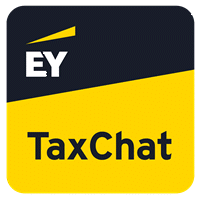Qualified dividends are generally dividends from shares in domestic corporations and certain qualified foreign corporations which you have held for at least a specified minimum period of time, known as a holding period. Another requirement is that the shares be unhedged; that is, there were no puts, calls, or short sales associated with the shares during the holding period.
These dividends are taxable federally at the capital gains rate, which depends on the investor’s modified adjusted gross income (AGI) and taxable income (the rates are 0%, 15%, and 20%). Higher earners are also impacted by the 3.8% net investment income tax (NIIT) outlined in the Affordable Care Act. So many actually pay an effective rate of 18.8% (15%+3.8% for the NIIT) or 23.8% (20%+3.8%) on long-term capital gains and dividends.
In certain circumstances, such as when shares are lent to a third party, payments may be made in lieu of dividends. If this applies to you, learn more about Annual Credit for Substitute Payments.
Qualified dividends on your tax reporting statement
Qualified dividends are reported on Form 1099-DIV in line 1b or column 1b. However, not all dividends reported on those lines may have met the holding period requirement. Those non-qualified dividends, as well as other ordinary dividends, may be taxed at your ordinary income tax rate, which can be as high as 37%.
If you neither bought nor sold securities in the tax year, the potential qualified dividends reported on your Form 1099-DIV should meet the holding period requirement and qualify for the lower tax rate, unless you hedged the securities.
Holding periods
Although the holding period requirement is the same whether you received a dividend for shares you hold directly or in a mutual fund during the tax year, how you determine the holding period may vary, as outlined below.
Note: When counting the number of days the fund was held, include the day the fund was disposed of, but not the day it was acquired.
Mutual funds
All of the following requirements must be met:
- The fund must have held the security unhedged for at least 61 days out of the 121-day period that began 60 days before the security’s ex-dividend date. (The ex-dividend date is the date after the dividend has been paid and processed and any new buyers would be eligible for future dividends.)
- For certain preferred stock, the security must be held for 91 days out of the 181-day period, beginning 90 days before the ex-dividend date. The amount received by the fund from that dividend-generating security must have been subsequently distributed to you.
- You must have held the applicable share of the fund for at least 61 days out of the 121-day period that began 60 days before the fund’s ex-dividend date.
Stock
- You must have held those shares of stock unhedged for at least 61 days out of the 121-day period that began 60 days before the ex-dividend date.
- For certain preferred stock, the security must be held for 91 days out of the 181-day period beginning 90 days before the ex-dividend date.
Example of determining holding period
Consider this hypothetical situation in which you have dividends reported on Form 1099-DIV as qualified from shares in XYZ fund. You purchased 10,000 shares of XYZ fund on April 27 of the tax year. You sold 2,000 of those shares on June 15, but continue to hold (unhedged at all times) the remaining 8,000 shares. The ex-dividend date for XYZ fund was May 2.
Therefore, during the 121-day window, you held 2,000 shares for 49 days (from April 28 through June 15) and 8,000 shares for at least 61 days (from April 28 through July 1).
The dividend income from the 2,000 shares held 49 days would not be qualified dividend income. The dividend income from the 8,000 shares held at least 61 days should be qualified dividend income.
Calculating the amount of qualified dividends
Once you determine the number of shares that meet the holding period requirement, find the portion per share of any qualified dividends. For each qualified dividend, multiply the two amounts to determine the amount of the actual qualified dividend.
To continue with the example above, a dividend of $0.18 per share was paid but only 50% of that dividend ($0.09 per share) was reported as a qualified dividend. Since you only held 8,000 out of your total 10,000 shares for the required holding period, the calculation to determine the amount of eligible qualified dividends would be:
Of the $1,800 reported as ordinary dividends for XYZ fund in line or column 1a of Form 1099-DIV, only $900 would be reported in line or column 1b as a Qualified Dividend. Of that $900, only $720 should be taxable at one of the more favorable rates. The remaining $1,080 of dividends reported would be taxed at your ordinary income tax rate.



